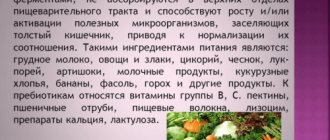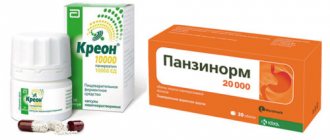Gastritis is a pathology that is rightfully called the “disease of the century”, because, according to modern research, this disease in one form or another is diagnosed in almost 50% of the population, including children and adolescents. There are as many reasons for the widespread spread of this disease as there are forms of gastritis, but in most cases, when special laboratory and instrumental studies of patients are carried out, it turns out that the disease is accompanied by infection of the stomach with the bacterium H. pylori. That is why probiotics are actively used in the treatment of pathology. "Hilak Forte" for gastritis is prescribed after or during treatment with antibiotics in order to maintain normal intestinal microflora, disturbed as a result of the disease.
Taking Hilak Forte in the treatment of bacterial gastritis can be prescribed by a doctor.
Bacterial gastritis
Since in approximately 80% of cases of diagnosing gastritis, the test for the presence of Helicobacter gives a positive result, such gastritis, according to the Sydney classification, is classified as a bacterial type. Previously, such forms of the disease were called type B gastritis, today other names can be found in the specialized literature - H. pylori positive non-atrophic gastritis, Helicobacter-associated gastritis). In acute gastritis, recorded for the first time, the percentage of damage by the bacterium H. pylori is much less, but in the chronic course of the disease it reaches 90% or more.
It is believed that this pathogen is normally present in the stomach or duodenum of almost all people, but in small quantities and in an inactive form. Under unfavorable circumstances, when inflammatory processes in the gastric mucosa begin to take on a permanent character, a favorable environment for the life activity (growth and reproduction) of this bacterium is created in the antrum of the stomach (which is located closest to the duodenum).
Symptoms of bacterial gastritis
As a rule, this form of the disease is characterized by the absence of atrophy of the glands responsible for the secretion of hydrochloric acid, atrophic lesions of the epithelium are also not observed, and inflammatory processes develop against the background of increased or normal acidity of the gastric environment.
Signs indicating a bacterial form of pathology:
- feeling of heaviness in the epigastric area;
- pain, burning sensation in the area of the stomach;
- belching with a characteristic sour odor;
- heartburn, nausea;
- the appearance of a persistent unpleasant odor in the oral cavity;
- dyspeptic disorders in the form of stool disorders;
- Possible manifestations of cardiac syndrome (unstable blood pressure, arrhythmia).
It is possible for gastritis Hilak Forte
Patients with gastritis are often prescribed Hilak Forte, a remedy that improves digestive processes. It must be taken strictly according to the instructions, as otherwise side effects are possible.
Since gastritis sometimes becomes a consequence of long-term use of potent medications or stomach surgery, we can assume that it is improper digestion that provokes this pathology. Drops of Hilak Forte can restore proper digestion of food, and therefore eliminate the source of gastritis.
The drug also helps to get rid of the unpleasant symptoms that accompany the disease:
- feeling of heaviness in the stomach;
- persistent nausea;
- constipation, intestinal disorders;
- imbalance in the microflora of the gastrointestinal tract.
Hilak Forte protects the gastric mucosa from the negative effects of acid that has entered food and bacteria. This contributes to its rapid revival - the inner lining heals, and the microflora necessary for digestion is restored - the ratio of pathogenic and beneficial microorganisms returns to normal (with gastritis, harmful bacteria predominate).
Often, with gastritis, patients are prescribed Hilak Forte, a drug that improves digestive processes; it must be taken strictly according to the instructions, otherwise side effects cannot be ruled out.
With long-term use of the medicine, the acidity of gastric juice can be normalized if the deviation was not very strong. An increase in the concentration of hydrochloric acid in the stomach is detrimental to the walls of the organ - this is the main cause of the development of gastritis. Hilak Forte normalizes acidity due to the presence of lactic acid in its composition. The first results can be seen very quickly.
Since the drug can regulate water metabolism in the small intestine, during the treatment period the balance of water and electrolytes in the body is additionally normalized. The intestines become healthier, as the product eliminates inflammatory processes in the organ (usually pathologies also occur due to the appearance of too many harmful microorganisms).
Hilak Forte is a drug for diseases of the stomach and intestines, restoring microflora that is disturbed due to disease. The medicine is not dangerous - it can be taken by pregnant women, lactating women, and even children. It is important to exclude contraindications for use, since sometimes Hilak Forte can even cause cancer.
As a by-product of therapy, a person’s immunity increases during treatment, as the body’s microflora is restored (aggressive medications and toxins greatly reduce it).
Hilak forte for high acidity
Medicines such as Pancreatin and Hilak Forte are not recommended during high acidity. They, on the contrary, increase appetite and increase the exocrine functions of the pancreas. Instead, to suppress the activity of parietal cells, proton pump blockers (PP) are used - antisecretory drugs intended for the treatment of acid-dependent gastrointestinal pathologies,
Diagnosis of bacterial gastritis
During the examination, the patient’s history and complaints are taken into account, as well as provoking factors (the presence of pathologies of the digestive tract in blood relatives, the presence of bad habits, excess weight, old age). The standard test for suspected gastritis is gastroscopy, which allows you to more accurately determine the condition of the stomach, the form of the disease and exclude oncology.
Examination of material taken through a gastric biopsy allows one to diagnose the presence/absence of Helicobacter pylori. The bacterial form can also be diagnosed using more gentle laboratory tests.
Treatment of bacterial gastritis
Since the main emphasis in the treatment of this type of gastritis is on the eradication of pathogenic microflora, the prescription of antibacterial drugs is mandatory. As a rule, to destroy Helicobacter, a regimen is used using two different antibiotics (for example, Amoxicillin and Clarithromycin), as well as drugs that eliminate the negative consequences of taking antibiotics (Hilak Forte for gastritis has also recently been included in the standard treatment regimen for the bacterial form of gastritis) .
Typically, antibiotics are taken for 7 to 10 days, after which a repeat test for Helicobacter is performed, and if the result is positive, antibiotics of the second group (Metronidazole + Tetracycline) are prescribed.
Features of antibacterial therapy for gastritis
Long-term and intensive use of antibiotics inevitably affects the state of the gastrointestinal microflora. Today, medicine is not able to ensure the selective effect of drugs of this group on certain types of microorganisms, therefore, along with the eradication (complete destruction) of Helicobacter, a significant change in the composition of the microflora that lives in the antrum of the stomach and duodenum occurs.
A change in the balance of opportunistic and beneficial microflora is called dysbiosis. Normally, lacto-, bifido-, colibacteria and enterococci present in the digestive tract form a slightly acidic environment, which inhibits the spread of pathogenic microorganisms. When this balance is disturbed, the number of pathogens increases, and their activity is manifested by the appearance of pronounced dyspeptic symptoms:
- a feeling of heaviness in the epigastrium that appears during or after eating;
- bowel disorders in the form of constipation or diarrhea (possibly alternating them);
- heartburn, which causes discomfort;
- nausea, which also appears after eating and lasts quite a long time.
"Hilak Forte" for bacterial gastritis with high acidity can eliminate all these symptoms and restore the disturbed bacterial balance.
This is a drug that represents a group of probiotics - medicines containing live bacteria characteristic of the microflora of the digestive tract in a normal state. To activate the reproduction of these microorganisms, prebiotics are prescribed - preparations containing nutrients that will serve as food for beneficial bacteria. "Hilak Forte" is a new generation of probiotics that has a metabolic effect on the processes occurring in the intestines.
The drug Hilak forte for gastritis
Many experts recommend taking Hilak Forte for gastritis. This drug helps normalize the digestive process. In order for a medicine to have a positive effect, the patient must be familiar with the rules for taking it, and also be warned about the side effects and contraindications of the drug.
With its help, patients manage to get rid of such unpleasant symptoms that accompany gastritis:
- indigestion, which manifests itself in the form of constipation or diarrhea;
- constant nausea and feeling of heaviness in the stomach;
- imbalance of the microflora of the digestive system.
“Hilak Forte” carefully envelops the mucous membrane of the diseased organ, thereby protecting it from the harmful effects of microorganisms and food that has entered the stomach. Thanks to this, it is possible to quickly restore the microflora, in which pathogenic bacteria predominate due to the disease.
Many experts recommend taking Hilak Forte for gastritis; this drug helps normalize the digestive process.
Regular use of the drug can solve the problem of a slight increase in the level of acidity of gastric juice. It is because of this that the gastric mucosa suffers the most. Lactic acid, which is part of the medicine, normalizes the pH, due to which the person begins to feel relief. By normalizing the natural microflora, the drug improves immunity, which has been reduced due to the influence of other drugs and pathogenic microbes.
"Hilak Forte" is produced in the form of a liquid, bottled. It is used for oral administration. The drug must be diluted with water (half a glass). Take it three times a day before or during meals.
The following dosages should be adhered to:
- adult patients should drink a solution of water and 40-60 drops of the product;
- children who have been diagnosed with gastritis take 20-40 drops diluted in water.
This dosage is for one dose. If the patient shows a significant improvement in his condition, then it can be reduced exactly by half. You should not reduce the dose of the drug on your own. This decision can only be made by the attending physician. Patients who complain of stomach problems should undergo a full course of treatment with this drug. It lasts on average from 2 to 4 weeks.
Hilak Forte is recommended to be taken for the treatment of gastritis. however, we must remember that it does not have a positive effect in all cases.
"Hilak Forte" is approved for use by young children who were diagnosed with gastritis at such an early age. Despite the fact that the drug is practically harmless, you should not give it to a child without first consulting a specialist.
"Hilak Forte" is recommended to be taken for the treatment of gastritis. However, we must remember that it does not have a positive effect in all cases. Only patients whose disease is chronic should resort to this method of eliminating disturbances in the gastrointestinal tract. In other cases, the medicine can cause serious harm to the stomach and cause a number of complications. By neglecting this warning, the patient risks getting an ulcer.
People who have the following health problems should avoid using or take the medicine with extreme caution:
- acute gastritis with increased secretory function of the stomach: the drug is prescribed to patients with this disease, which has a chronic form. In other cases, it can cause even more harm to the stomach, for example, trigger the appearance of ulcers;
- high level of gastric acidity: doctors recommend taking medicine to normalize the pH. However, if it is too elevated, then the interaction of hydrochloric and lactic acid will cause the development of dangerous complications;
- if, in addition to gastritis, the patient is diagnosed with Zollinger-Ellison syndrome, then he should stop taking Hilak Forte, since prolonged exposure to lactic acid can provoke the formation of stomach cancer;
- any form of gastritis or other disease of the gastrointestinal tract, which is accompanied by bleeding. They can be identified during stool examination;
- Severe gastritis does not respond to such treatment. And the medicine only aggravates the patient’s condition;
- severe heartburn that occurs throughout the day. This symptom indicates an increased level of stomach acidity, which precludes the use of Hilak Forte.
Mechanism of action of "Hilak Forte"
The metabolic products contained in Hilak Forte drops are used by beneficial bacteria to stimulate growth and reproduction, which contributes to the rapid restoration of the normal balance of the microflora of the digestive tract. An additional effect of the drug is the presence of biosynthetic lactic acid in the drug, which has an oxidative effect on the alkaline environment of the intestine. Under such conditions, pathogenic microflora cannot reproduce. In addition, the drops contain volatile polyunsaturated fatty acids, which have a stimulating effect on the regenerative abilities of the intestinal and gastric mucosa.
Yu.A. Kopanev
FGUN MNIIEM im. G.N. Gabrichevsky, Moscow
Scientists began to think about the importance of intestinal microflora for humans at the beginning of the 20th century. In the last 25-30 years, due to the improvement of microbiological and immunological diagnostic methods, new opportunities have emerged for studying the microbiocenosis of the human intestine. Currently, the role of intestinal microecology in the implementation of many important functions of the macroorganism (digestive, anti-allergic, immune, metabolic and many others) has been proven, as well as the role of disorders of the intestinal microbiocenosis - dysbacteriosis in the development of a number of pathological conditions (enzymopathies, inflammatory diseases of the gastrointestinal tract, allergic diseases, etc. .). Normal microbial flora with its specific functions determines the intestinal biocenosis and ecological balance, and disruption of these functions leads to disruption of various types of metabolism, deficiency of vitamins and microelements, and a decrease in immunological status, which leads to the occurrence of irreversible processes in organs and systems. The industry standard, adopted by order of the Ministry of Health of the Russian Federation in 2003, gives the following definition of the concept of dysbiosis: “this is a clinical and laboratory syndrome that occurs in a number of diseases and clinical situations, characterized by symptoms of intestinal damage, changes in the qualitative and/or quantitative composition of normal microflora, and also by the translocation of its various species into unusual biotopes and their excessive growth” [6]. Thus, dysbiosis (dysbacteriosis) is a state of the ecosystem in which there is a disruption in the functioning of its components and the mechanisms of their interaction, which results in the development of human disease. The concept of “intestinal dysbiosis” is broader than the concept of “dysbacterial reactions”. Intestinal dysbiosis is a more pronounced and persistent condition. According to the Russian Academy of Medical Sciences, more than 90% of the Russian population suffer from one or another manifestation of microbiological disorders of the gastrointestinal tract, these disorders are especially common among children. There are known facts of significant deviations in the intestinal bacteriogram in a large number of practically healthy children. The methodological features of performing the analysis should also be taken into account. Consequently, the interpretation of microbiological analysis of feces should be approached with great caution and practical conclusions should be drawn only after comparing the analysis data with the clinical picture. Therefore, studying the clinical picture characteristic of microecological disorders is an important task. Disturbances in the intestinal microecology can lead to functional disorders of the gastrointestinal tract: dyspepsia, abdominal pain syndrome, stool disorders, fermentopathy, including lactase deficiency, malabsorption. Allergic problems may also occur - atopic dermatitis, eczema; disturbances of various types of metabolism, the occurrence of deficiency of vitamins and microelements; a decrease in immunological status, which can lead to the appearance of irreversible processes in organs and systems. Thus, intestinal dysbiosis, although it is not itself a nosological entity, can be a serious prerequisite for the development of various diseases. Dysbacteriosis is always secondary and causally determined. The reasons for the development of dysbiosis in children in the first months of life can be: unfavorable course of pregnancy, accompanied by toxicosis, threat of miscarriage, taking antibacterial and hormonal drugs; identified and hidden intrauterine infections; chronic diseases in the mother or acute diseases during pregnancy; dysbacteriosis and dysvaginosis in the mother; C-section; late breastfeeding; early introduction of artificial formulas; ecological situation. In the future, intestinal dysbiosis can develop as a result of exposure of the host's body to antibacterial and hormonal drugs, stress, radiation therapy and chemotherapy, ionizing radiation, electromagnetic fields, sudden changes in climatic conditions and geographic regions of residence, as well as nutritional patterns. Intestinal dysbiosis, as a rule, occurs in immunodeficiency states, as well as gastrointestinal diseases, infectious and parasitic diseases, and as a result of exposure to a number of other factors. Short-term changes in the intestinal microbiocenosis that disappear after eliminating the effect of the factor that disrupted the microecology are called dysbiotic (dysbacterial) reactions. To correct microecological disorders, drugs and dietary supplements belonging to different pharmacological groups are used, including enzyme agents, intestinal antiseptics, bacteriophages, and immunomodulators. But pro- and prebiotics are most actively used. Probiotics are preparations containing live bacteria – representatives of the normal human intestinal microflora. Prebiotics, unlike probiotics, do not contain live bacteria, but at the same time they have the properties to favorably influence the state of microbiocenosis, improving the vital activity of beneficial bacteria and creating the most comfortable conditions for them. One of the drugs with prebiotic properties is Hilak forte (ratiopharm, Germany). Hilak forte contains autoflora metabolites with high biological activity. The preparation contains a sterile concentrate of metabolic products of saccharolytic (Lactobacillus acidophilus, L. helveticus and Enterococcus faecalis) and proteolytic (Escherichia coli) representatives of indigenous microflora, short-chain fatty acids. Additionally, the drug contains biosynthetic lactic, phosphoric and citric acids, potassium sorbate, a balanced complex of buffer salts (acid sodium phosphate and potassium), lactose and a number of amino acids. The biological activity of 1 ml of Hilak forte corresponds to the activity of approximately 100 billion (1010-1011) living microorganisms [1]. At the same time, Hilak forte is not a classic prebiotic, which implies the presence of indigestible food ingredients that help selectively stimulate the growth and/or metabolic activity of one or more groups of bacteria living in the large intestine. This is the uniqueness of the drug; Hilak Forte has practically no analogues. The drug regulates the balance of intestinal microflora and normalizes its composition. Due to the content of metabolic products of normal microflora, Hilak forte helps restore normal intestinal microflora biologically and allows you to preserve the physiological and biological functions of the intestinal mucosa. The biosynthetic lactic acid and its buffer salts included in the drug restore the normal acidity value in the gastrointestinal tract (regardless of whether the patient has high or low acidity). Against the background of accelerating the development of normal intestinal symbionts, the drug normalizes the natural synthesis of vitamins B and K. The short-chain volatile fatty acids contained in the drug ensure the restoration of damaged intestinal microflora in infectious diseases of the gastrointestinal tract, stimulate the regeneration of epithelial cells of the intestinal wall, and restore the disturbed water-electrolyte balance in intestinal lumen [7]. Hilak Forte is available in the form of drops for oral administration in bottles of 30 ml and 100 ml. Recommended dosage regimen: in the first days of treatment for adults, the drug is prescribed 40-60 drops 3 times a day; children over 1 year old – 20-40 drops 3 times a day; Infants – 15-30 drops 3 times a day. After the condition improves, the initial daily dose of Hilak Forte can be reduced by half. Take orally before or during meals in a small amount of liquid, excluding milk. Indications for use of Hilak forte [7]:
• disturbances of the physiological flora of the small and large intestines during and after treatment with antibiotics, sulfonamides, radiation therapy; • syndrome of insufficiency of digestion, dyspepsia; • diarrhea, flatulence, constipation; • gastroenteritis, colitis; • hypo- and anacid conditions (including during pregnancy); • enterogenous diseases of the gallbladder and liver; • skin diseases of allergic origin, in particular eczema, urticaria (as part of combination therapy); • follow-up treatment of convalescents of salmonellosis (including infants).
Extensive experience (including personal experience) has been accumulated in the use of Hilak Forte for various conditions in patients of different ages. There are certain features of using this drug in certain clinical situations.
Application of Hilak Forte in the complex correction of microbiological disorders (in case of intestinal dysbiosis) Depending on the nature of the disturbances of the biocenosis, two main types of intestinal dysbiosis can be distinguished: 1) with a decrease in the number of obligate (useful) bacteria (bifidobacteria, lactobacilli and E. coli with normal enzymatic activity) ; 2) with an increase in the number or percentage of opportunistic microorganisms - UPF (lactose-negative enterobacteria, hemolyzing Escherichia coli, Staphylococcus aureus, fungi, etc.). One patient may have a combination of both types. Latent dysbacteriosis also occurs, when there are no pronounced abnormalities in the analysis, but the functional activity of beneficial bacteria is sharply reduced, and the function of the gastrointestinal tract is correspondingly impaired [3, 4]. Depending on the type of dysbacteriosis, treatment tactics are selected. Thus, if in case of type I dysbiosis the emphasis is placed on the administration of probiotics and prebiotics, then in case of type II dysbacteriosis immunocorrection is necessary, since in this type of dysbiosis the leading pathogenetic link is immunological deficiency. The issue of prescribing antimicrobial drugs is also being addressed. If microorganisms are sensitive to bacteriophages, drugs from this group are prescribed. It is also possible to prescribe intestinal antiseptics and bacilli. The use of antibiotics for the treatment of intestinal dysbiosis is not justified. Prescription of drugs from different groups is possible simultaneously or sequentially. Hilak Forte can be used in the correction of type I dysbiosis (prebiotic effect - improving the engraftment of autoflora, creating optimal conditions for beneficial bacteria, improving their enzymatic activity and competitiveness). You can also use Hilak Forte in corrective measures for type II dysbacteriosis, since the drug creates unfavorable conditions for opportunistic microflora and fungi. With mild degrees of dysbiosis (slight decrease in autoflora or slight increase in UPF), Hilak Forte can even be used in therapeutic dosages as monotherapy. In cases of second and third degree dysbiosis, monotherapy with Hilak Forte may be less effective, so the drug is used in complex therapy. It should be taken into account that Hilak Forte can significantly reduce the effectiveness of bacteriophages (an acidic environment inactivates bacteriophages), so their combined use is unacceptable. In this case, Hilak Forte can be prescribed after finishing taking the bacteriophage. There are no undesirable interactions with enzyme preparations, dry probiotics and drugs of other groups. The duration of use of Hilak Forte for dysbacteriosis is usually 20-30 days.
Use of Hilak Forte for constipation One of the causes of functional constipation may be insufficient activity of the intestinal microflora, as a result of which the process of production of endogenous lactic acid, which is one of the biochemical substrates that activate intestinal peristalsis, is disrupted. The use of Hilak Forte for constipation is justified both because the drug contains lactic acid, which directly stimulates intestinal motility, and because its own flora is activated. Hilak Forte is especially effective for constipation accompanied by dysbiosis with a decrease in the number or enzymatic activity of beneficial bacteria (type I dysbiosis). The use of Hilak Forte in patients with functional constipation in most cases leads to normalization of stool, improves its characteristics, has a pronounced effect of stimulating the growth of bifidobacteria and lactobacilli, and helps reduce stool pH with inhibition of the growth of opportunistic strains [8]. The duration of treatment with Hilak Forte for functional constipation is 2-6 weeks. With long-term use and an adequate dose of the drug, no side effects were recorded.
Use of Hilak Forte for acute intestinal infections by employees of the Federal State Institution MNIIEM named after. G.N. Gabrichevsky, several studies assessed the effectiveness of Hilak Forte in adults and children with acute intestinal infections (AIE). Among the nosological forms, in addition to acute intestinal infections of unknown etiology, there were the following: acute dysentery, salmonellosis, cryptosporidiosis, rotavirus infection. Hilak Forte had a more pronounced positive effect than the basic drugs on the timing of the disappearance of intoxication, dyspeptic symptoms, and normalization of stool. The drug restored the microbiocenosis of the colon, which was confirmed by a change in the nature of the microflora with a significant decrease in the number of opportunistic microorganisms. At the same time, its normalizing effect on volatile fatty acids, their isoforms, as well as the pH of feces, the amount of neutral and salts of fatty acids was noted. The drug helped reduce the severity of inflammation in the mucous membrane of the colon and atrophic processes in it [2, 5]. There is evidence that Hilak forte enhances the body's protective functions by stimulating the immune response. When using the drug Hilak Forte, there is an acceleration of the elimination of Salmonella in infants after Salmonella enteritis, which is due to stimulation of the growth of acidophilic anaerobic flora and its subsequent antagonistic effect on Salmonella. The duration of use of Hilak Forte for acute intestinal infections is the entire acute period (the height of clinical manifestations) plus at least 2 weeks of the recovery period. Although Hilak forte stimulates gastrointestinal motility and is a means of treating functional constipation, patients who received it during the acute and recovery period of intestinal infections did not experience an increase in stool frequency or additional discomfort. It is obvious that lactic acid and autoflora metabolites perform a regulatory function on gastrointestinal motility, that is, the drug Hilak Forte can be used both for functional constipation and for diarrhea of infectious or functional origin.
Use of Hilak Forte in antibacterial therapy Unfortunately, when prescribing antibiotics, their effect on the intestinal microbiocenosis is not always taken into account. Antibacterial drugs suppress the growth of not only pathogenic microorganisms, but also normal microflora. As a result, conditions appear for the activation of UPF (staphylococci, Proteus, yeast fungi, Pseudomonas aeruginosa, Klebsiella). In these cases, the use of drugs that regulate the balance of intestinal flora is indicated. Thus, the drug Hilak Forte simultaneously has a sanitizing effect and stimulates the regeneration of physiological flora. To prevent microflora disturbances under the influence of antibiotics, the use of Hilak Forte during antibiotic therapy is indicated, since it is a drug that does not contain live or lyophilized strains. Lactic acid creates conditions unfavorable for pathogenic microorganisms. Metabolic products of normal microflora, which are part of Hilak forte, are a substrate for the growth and reproduction of beneficial microorganisms and stimulate the regeneration of the entire spectrum of physiological flora [10]. The duration of taking Hilak Forte during antibacterial therapy is at least 3 weeks. Unfortunately, the use of Hilak Forte or probiotic preparations is not in all cases an effective prevention of dysbiosis, which develops after antibiotic therapy, usually not immediately, but 2-3 weeks after the use of the antibiotic, but the likelihood of developing microbiological disorders still decreases.
Use of Hilak Forte for metabolic disorders As a result of studies of the effectiveness of the drug, it was found that the properties of the prebiotic are aimed not only at optimizing the functional state of the intestine, but also participate in the regulation of important homeostatic mechanisms at the level of the macroorganism. This drug realizes its positive effect on the physiological functions of the macroorganism as a result of modulation of immune reactions, changes in the function of macrophages, production of cytokines, and activation of the immune system associated with the mucous membranes. Hilak forte normalizes the water-electrolyte balance and pH in the intestinal lumen, stimulates the synthesis of epithelial cells of the intestinal wall [9]. Against the background of accelerating the development of normal intestinal symbionts under the influence of Hilak Forte, the natural synthesis of vitamins B and K and the absorption of minerals are normalized; the digestive, neutralizing, synthetic functions of microflora are restored, the physiological properties of the gastrointestinal mucosa are improved. Thanks to volatile fatty acids, which are an energy substrate for damaged epithelial cells, Hilak forte eliminates atrophic and inflammatory processes in the intestinal epithelium [10]. In this regard, the use of Hilak Forte in complex therapy as an adjuvant is justified for any metabolic disorders, from rickets to diabetes and other serious diseases.
Features of the use of Hilak Forte in infants The drug can be prescribed to a child almost from birth. Since Hilak Forte has an effective symptomatic effect, as a means of relieving spastic conditions, colic (both caused by intestinal dysbiosis and physiological) may be an indication for use. In complex treatment, Hilak Forte is used for functional constipation, lactase deficiency, dysbiosis and dysbacterial reactions, which often occur spontaneously in children of this age. In infants, prevention of dysbacteriosis is required not only for acute intestinal infections or the use of antibiotics, but also for any acute respiratory viral infection, during the vaccination process (start taking it 3 days before vaccination - duration 7-10 days), as well as during teething (the first week of teething). new tooth). Many doctors believe that children may refuse to take the drug due to taste. However, this problem can be solved and cannot become an obstacle to prescribing Hilak Forte to children, including infants. A doctor recommending Hilak Forte must remember: • the drug must be diluted. You can mix Hilak Forte with sweetened “water” - any baby tea, juice, compote or water with added fructose (at the rate of 1 teaspoon per glass of water).
conclusions
1. Hilak Forte can be used as monotherapy or as part of complex treatment for dysbiosis of any type. 2. Hilak forte is incompatible with bacteriophages and liquid probiotics when used together. 3. Hilak forte is effective for functional constipation; with long-term use (more than 1 month), no side effects are observed. 4. Hilak forte is an effective means for maintaining microbiocenosis and preventing the development of dysbiosis during acute intestinal infections and the use of antibacterial agents. 5. Hilak Forte can be used as an adjuvant for diseases accompanied by metabolic disorders, since by improving intestinal metabolism it optimizes metabolism at the macroorganism level.
Literature 1. Bondarenko V.M., Boev B.V., Lykova E.A. and others. Dysbacteriosis of the gastrointestinal tract // Russian Journal of Gastroenterology, Hepatology, Coloproctology. 1999; 1: 66-70. 2. Gracheva N.M., Partin O.S., Leontyeva N.I. Shcherbakov I.T. The use of drugs from metabolites of normal microflora in the treatment of patients with acute intestinal infections // Epidemiol and infectious diseases. 1996; 3:30-2. 3. Kopanev Yu.A. Intestinal dysbiosis in children // Pediatric practice. September 2006; 12-13. 4. Kopanev Yu.A., Sokolov A.L. Intestinal dysbiosis: microbiological, immunological and clinical aspects of microecological disorders in children. M.: Moscow Research Institute of Pediatrics and Pediatric Surgery. 2002; 147. 5. Leontyeva N.I., Shcherbakov I.T., Partin O.S., Solovyova A.I., Blokhina T.A. Application of Hilak-Forte in patients with acute and chronic diseases of the gastrointestinal tract and intestinal dysbiosis // Materials of the IX Russian National Congress “Man and Medicine”. M.: 2001; 262. 6. Industry standard. Protocol for the management of patients with intestinal dysbiosis / Feklisova L.V. // Individual approaches to the problem of dysbiosis. Abstracts of reports of the scientific and practical seminar. M.: 2003; 3-7. 7. Vidal reference book. Medicines in Russia. M.: AstraPharmServis, 2004; 919 – 920. 8. Ursova N.I., Rimarchuk G.V., Savitskaya K.I. The problem of microbiocenosis disturbance in children and its correction // Practitioner. 2001; 319:1:33-35. 9. Khavkin A.I. Microflora of the digestive tract. M.: 2006; 323-324. 10. Shcherbakov P.L. Issues of pediatric gastroenterology // Russian medical journal. 2003; 3: 107-12.
How to take Hilak Forte
The drug is a colorless liquid produced in bottles for internal use. Hilakforte is diluted with water (half a glass is enough for a single dose) and taken three times a day (during meals or immediately before meals).
For adults, a single dosage is 50–60 drops; for children diagnosed with type B gastritis, 25–40 drops are prescribed. If dyspeptic symptoms decrease, you can reduce the dosage by half, but you should not decide on your own to change the drug treatment regimen.
The full course of treatment for dysbacteriosis in gastritis takes 15–30 days—that’s how long the drops are taken to eliminate the symptoms of dyspepsia.
Treatment of gastritis Hilak forte
Since gastritis disrupts the digestive processes and causes an imbalance in all organs of the system, which is also facilitated by the use of other medications, patients are prescribed probiotics.
No negative effects on the body from Hilak Forte prescribed to stabilize the secretory function of the stomach in the treatment of gastritis have been noticed so far.
Gastroenterologists recommend drinking Hilak Forte. The drug helps with diarrhea, constipation, colitis, gastroenteritis, hypocidal gastritis. Hilak Forte, taken in the dosage prescribed by a specialist, also improves digestion and eliminates dyspepsia. Hilak Forte is taken three times a day, 40 drops. If you feel better, the dose is halved. The advantage of the drug Hilak Forte is the absence of side effects.
The medicinal drug Hilak Forte contains components that contribute to the complete and safe restoration of the mucous membrane in the digestive organs, which is damaged by the inflammatory processes that occur during gastritis.
No negative effects on the body from a drug such as Hilak Forte, prescribed to stabilize the secretory function of the stomach in the treatment of gastritis, have been noticed so far.
Only short-term side effects such as bowel problems or bloating were noted. But, despite this, it should be used for treatment only as prescribed by a doctor. It is important to remember that an open bottle of Hilak Forte should be stored for no more than 1.5 months.
The main ones among them are the following:
- four germ-free aqueous substrates of metabolic products: after penetration into the gastrointestinal tract, they contribute to the normalization of local microflora, thereby preparing the ground for the development of their own. This process usually lasts about a month, so the drug will be prescribed by a doctor for this period;
- lactic acid: it helps restore the secretory function of the stomach, regardless of its acidity;
- Hilak forte, prescribed for gastritis, also contains volatile fatty acids that promote cell regeneration.
Side effects when treating gastritis with Hilak Forte drops
Like most other medications, the drug for the treatment of intestinal dysbiosis has a number of side effects:
- allergic reactions are possible, manifested as rashes on the skin, accompanied by itching;
- stool disorders (constipation/diarrhea).
It should be noted that both allergies and dyspeptic symptoms appear quite rarely, and stool disorders are characteristic of most types of gastritis. If such side effects do occur, you need to contact a gastroenterologist who will adjust the treatment regimen. Although the dosage prescribed by the doctor should be followed with the utmost scrupulousness, an accidental or intentional overdose of the drug does not threaten any troubles, except dyspepsia.
Contraindications to taking Hilak Forte for gastritis
It is necessary to refuse to take drops or take them with great caution if you have the following pathologies:
- With exacerbation of gastritis. Hilak is prescribed for a bacterial type of the disease that occurs in a chronic form; in the acute course of the disease, taking drops can provoke a deterioration in the condition up to the development of gastric erosions into ulcers.
- With very high acidity, fatty acids. The fact is that the drug, although recommended as a means of normalizing the pH level, due to the presence of lactic acid in its composition, can, when interacting with an increased concentration of hydrochloric acid, cause an exacerbation of the disease. For this reason, the question of whether it is possible to drink “Hilak Forte” for gastritis with high acidity is ambiguous, and the interpretation of the attending physician should be taken into account.
- If you have a history of Zollinger-Ellison syndrome, a potentially malignant neoplasm localized primarily in the pancreas (85% of cases) or stomach. Long-term use of Hilak Forte due to the presence of lactic acid can provoke the development of stomach cancer.
- Gastritis of the hemorrhagic type, accompanied by internal bleeding. Such conditions are easily diagnosed by examining stool.
If a patient experiences heartburn that lasts not only after eating, but throughout the day, this indicates that the gastric environment is too acidic. You should avoid taking Hilak Forte for gastritis with very high acidity.
If gastritis is observed in pregnant women, drops against dysbacteriosis are not included in the list of direct contraindications. Rather, on the contrary, taking Hilak will have a protective effect, protecting the digestive tract from the negative effects of other medications. But during lactation you should not drink drops.
The drug Hilak forte
The drug Hilak forte is a probiotic. It can be used by people of all ages, including infants. It restores normal microflora naturally and maintains the required percentage ratio between all types of microorganisms inhabiting the intestines.
The drug Hilak forte is a probiotic and can be used by people of all ages, including infants
Particular attention should be paid to the fact that the drug Hilak Forte not only restores the number of beneficial microorganisms, but also regenerates the intestinal mucosa. Taking the drug normalizes the synthesis of vitamins produced by our body and acidity in the gastrointestinal tract.
The drug Hilak Forte is sold in pharmacies without a doctor's prescription. It has no contraindications, tastes good, and is easy to dose. The drug has a rapid therapeutic effect. To help readers of MirSovetov, we provide an abstract of these drops.
Hilak forte is available in the form of drops for internal use. It is a clear solution whose color can vary from light yellow to yellow-brown. The drops have a sour smell.
The drug is available in dark glass bottles of 30 and 100 ml. The bottles are sealed with special dropper stoppers for precise dosing of the drug and plastic screw caps. The drug contains aqueous solutions of metabolic products of Escherichia, streptococcus, lactobacilli and various excipients.
Special instructions for Hilak drops
Since the drug already contains lactic acid, when taking it it is not recommended to consume milk or any lactic acid products, with the exception of sweet yoghurts.
It is strictly forbidden to use drops in concentrated form. They can be diluted with any liquid allowed under the antigastritis diet. If reflux gastritis is present, the dosage of the medicine should be reduced to 6 ml and this amount should be taken divided into three doses.
Important: In the presence of diarrhea, severe dehydration of the body occurs, therefore, when treating gastritis in children and older patients using Hilak Forte, it is necessary to replenish fluid loss in a timely manner.






